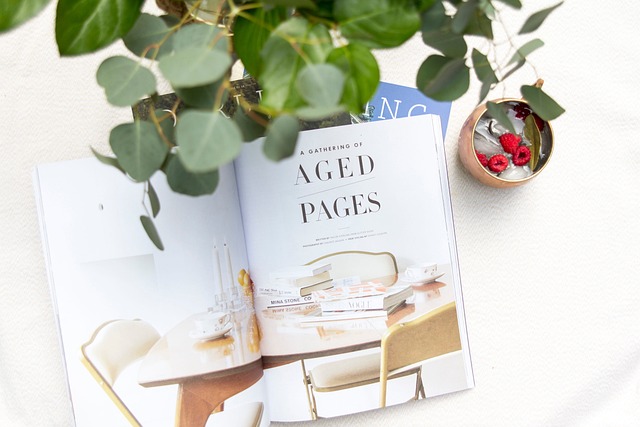Hobby magazines are a fantastic way for enthusiasts to share their passion and creativity. So, how do hobbies magazines showcase reader projects? These magazines often feature a section dedicated to showcasing work submitted by readers. This could include everything from detailed project descriptions and photos to step-by-step guides on how to recreate the projects.
By highlighting reader projects, magazines not only inspire others but also create a sense of community among hobbyists. In this blog, we’ll dive into the different ways hobby magazines present these projects and the impact they have on readers.
How Are Reader Projects Featured in Hobbies Magazines?
Hobbies magazines often feature reader projects in several ways to celebrate the creativity and talent of their audience. One common method is through dedicated sections or columns specifically for reader submissions. These sections provide a platform for hobbyists to share their work, offering both visual inspiration and practical ideas.
In addition to dedicated sections, magazines may include reader projects in regular content, such as tutorials, articles, or themed features.
This integration helps to keep the content fresh and engaging while showcasing a diverse range of projects. Readers can see real-life examples of techniques and ideas discussed in the magazine, making the content more relatable and inspiring.
✨ Also read: Can Hobbies Magazines Offer Practical Advice?

What Types of Projects Are Typically Showcased?
Hobbies magazines cover a wide range of interests, so the types of projects showcased can vary greatly. Common categories include:
- Crafts: Projects such as knitting, quilting, scrapbooking, and jewelry making.
- Home Improvement: DIY home décor, furniture upcycling, and garden projects.
- Cooking and Baking: Recipes, meal prep ideas, and creative food presentations.
- Art and Design: Paintings, drawings, sculptures, and other artistic creations.
The variety of projects featured reflects the diverse interests of the magazine’s readership. By showcasing different types of projects, magazines can appeal to a broader audience and provide something for everyone.
How Do Magazines Select Projects for Features?
Magazines usually have a submission process for reader projects, which might include guidelines on how to submit work. These guidelines often specify what types of projects they are looking for, the format for submissions, and any deadlines.
Selection is typically based on several factors, including:
- Creativity and originality: Unique and innovative projects often stand out.
- Quality of execution: Well-crafted and polished projects are more likely to be featured.
- Relevance: Projects that align with the magazine’s current themes or interests are preferred.
The editorial team reviews submissions and selects projects that best fit the magazine’s style and content goals. This process ensures that featured projects are both high-quality and aligned with the magazine’s brand.
What Benefits Do Reader Projects Provide to Magazines?
Featuring reader projects offers several benefits to hobbies magazines:
- Increased Engagement: Showcasing reader projects encourages more interaction from the audience. Readers are often excited to see their work in print and may feel more connected to the magazine.
- Content Variety: Reader projects add diversity to the magazine’s content, providing fresh and varied ideas for readers.
- Community Building: Highlighting reader projects helps build a sense of community among hobbyists. It shows that the magazine values and supports its readers’ creativity.
Overall, featuring reader projects enhances the magazine’s content and fosters a stronger relationship with its audience.

How Can Readers Get Their Projects Featured?
Readers interested in having their projects featured should follow these steps:
Review Submission Guidelines: Magazines usually provide specific instructions for submitting projects. These guidelines can be found on the magazine’s website or in recent issues.
Prepare Your Submission: Ensure that your project is well-documented with clear photos and detailed descriptions. Include any relevant information that highlights the uniqueness and effort involved in your project.
Submit on Time: Adhere to any deadlines for submissions to increase the chance of being featured.
Follow-Up: If applicable, follow up with the magazine to confirm receipt of your submission and inquire about the selection process.
By carefully preparing and submitting their projects, readers can increase their chances of being featured in hobby magazines.
How Do Reader Projects Inspire Others?
Reader projects serve as a powerful source of inspiration for others. Seeing the creativity and skill of fellow hobbyists can motivate readers to try new techniques or start their own projects. This sense of community and shared creativity is a key aspect of hobbies magazines.
Projects featured in magazines often include detailed instructions or tips, which can help readers replicate or adapt ideas. This practical guidance, combined with visual examples, makes it easier for readers to engage with new hobbies and improve their skills.
What Are Some Notable Examples of Reader Projects in Hobbies Magazines?
Notable examples of reader projects might include:
- A DIY bookshelf made from reclaimed wood featured in a home improvement magazine.
- An intricate quilt design shared by a quilting enthusiast in a crafts magazine.
- A collection of custom-painted flower pots highlighted in a gardening magazine.
These examples illustrate the range of projects that magazines might showcase, from home décor to craft and gardening. They provide valuable insights and inspiration for readers looking to embark on similar projects.

FAQ’s
How can I submit my project to a hobbies magazine?
To submit your project, check the magazine’s website or recent issues for submission guidelines. Prepare your project with clear photos and detailed descriptions, and adhere to any specified deadlines.
What types of projects are typically featured in hobbies magazines?
Projects can vary widely depending on the magazine’s focus, but common types include crafts, home improvement, cooking, and art. Each magazine has its own interests and themes.
How do magazines select which reader projects to feature?
Magazines select projects based on creativity, quality, and relevance to the magazine’s content. The editorial team reviews submissions to choose projects that best fit their style and goals.
Why are reader projects important to hobbies magazines?
Reader projects increase engagement, add content variety, and build a sense of community. They provide fresh ideas and demonstrate the creativity of the magazine’s audience.
Conclusion
Hobbies magazines play a crucial role in showcasing the creativity of their readers by featuring diverse projects across various interests. These projects not only inspire others but also foster a sense of community among hobbyists.
By following submission guidelines and sharing their work, readers can become part of this exciting feature. The celebration of reader projects highlights the vibrant and interactive nature of hobbies magazines, making them a valuable resource for enthusiasts everywhere.

Welcome to MatteMaggizens, where Ivy Grace curates insightful content that enriches your reading experience with a blend of knowledge and inspiration.












